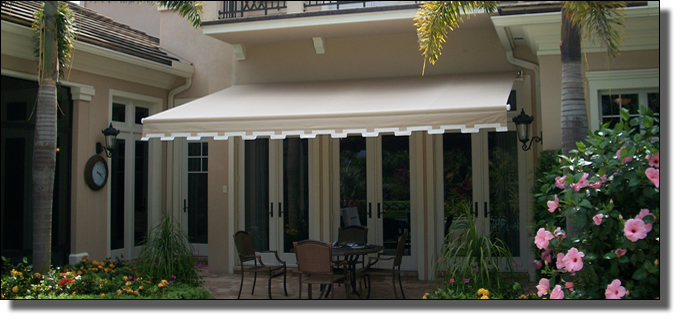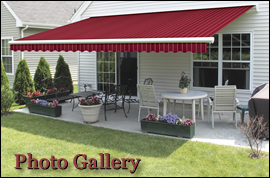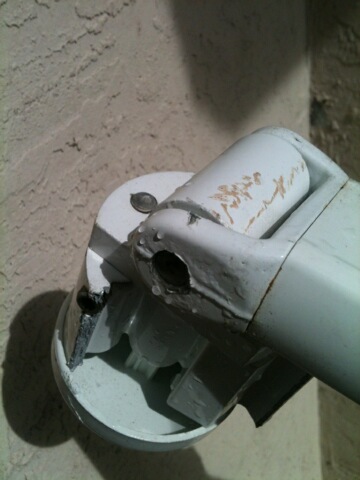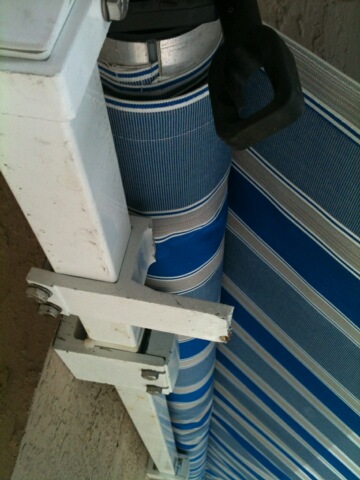
| |
2082 Cezanne Rd
West Palm Beach, FL 33409
Phone: (561) 732-2444
Email Us |
|
|
Awning Manufacturing - Fort Lauderdale, Florida
|
 |
Forged Aluminum or Steel Parts
Your Premier Awnings Rollout model uses forged components, not cast, aluminum arm components. Why this is done is explained by comparing forging and casting as manufacturing techniques.
Casting
The casting process consists of pouring or injecting molten liquid metal into a mold containing a cavity with the desired shape of the casting. Metal casting processes can be classified either by the type of mold or by the pressure used to fill the mold with liquid metal.
Fundamentals of Casting
Casting begins with a liquid metal and requires a solidification process. Therefore, the microstructure can be finely tuned, such as grain structure, phase transformations and precipitation. However, defects such as shrinkage porosity, cracks, inclusions of air and segregation are also intimately linked to solidification. These defects can lead to lower mechanical strength & flexibility properties.
| Premier Awning Features:
- German Designed & Engineered frames for use in Heavy Rains. Made of heavy-duty alloy with lifetime warranty.
- Sunbrella® Fabrics with 10 year warranty and lifetime stitching guarantee
- Somfy Motors installed by Certified Technicians with 5 year warranty
- Will Not Mildew, Fade or Leak
- Built-in Rain Gutter! Sit at the edge and stay dry!
| >
Weakness of casting:
- Defects (often internal and not visible)
- Shrinkage, porosity (not visible)
- Metallic projections
- Cracks, hot tearing, cold shuts
- Laps, oxides
- Miss-runs, insufficient volume
- Inclusions (not visible)
- Requires close process control and inspections (porosity may disguise itself)
|  |
 |
 |
Examples of weakness of cast arm
and component from a competitor
|
Forging
Forging is a manufacturing process where metal is shaped by plastic (not liquid) deformation under great pressure into high strength parts, ideal for awning components.
Fundamentals of Forging
Forging or cold forming are metal forming processes. There is no melting and consequent solidification involved. Plastic deformation produces an increase in the number of dislocations resulting in a higher state of internal stress. Indeed, strain hardening is attributed to the interaction of dislocations with other dislocations and
other barriers (such as grain boundaries). Simultaneously, the shape of primary
crystals (dendrites) changes after plastic working of the metal. Dendrites are
stretched in the direction of metal flow and thus form fibers of increased strength along the direction of flow. We may distinguish hot working from cold working. Hot working (casting) is performed above the recrystallization temperature ,forcing recrystallization as cooling occurs; cold-working (forging) is performed below it. In hot working strain hardening (a good feature) and distorted grain structure are very rapidly eliminated by the formation of new strain-free grains as the result of recrystallization. Rapid diffusion at hot working temperatures aids in homogenizing the preform. Initial
porosity can also be significantly reduced, eventually completely healed.
Metallurgical phenomena such as strain hardening and recrystallization are
important because these changes in structure result in an increase in ductility
and toughness over the cast state.
Strength of forging:
- Good Mechanical properties (yield strength, ductility & toughness)
- Reliability (used for critical parts)
- No liquid metal treatment
Manufacturing
Cast awning components are formed by pouring molten aluminum into a mold and machining the bolt-holes and flanges into spec. Forged awning components are formed by hammering hot or cold aluminum ingots into shape between a set of dies.
Molecular Grain
Cast awning components have a uniform grain, where the molecules sit on top of each other and are held together by mechanical adhesion (like a bowl of cooked rice). Forged awning components have an interlocking grain structure that is more difficult to pull apart (like a bowl of spaghetti).
Metals
Most cast awning components use A-356 aluminum, which is only about 60 percent as strong as the 5000 or 6000-series alloys used for forged aluminum awning components.
Weight
While the weight of forged and cast awning components is almost equally dense, the stronger nature of the forged aluminum means that components made in that manner require less material to maintain the same rigidity.
Cost
The only advantage that cast awnings have over forged units is that they're 25 to 50 percent cheaper.
Process
Forged components start out as an ingot – a large mass of metal, usually aluminum or aluminum alloy. These ingots are then reduced to smaller billets before hammers or presses forge them into shape. Each billet requires repetitive machining to reach its required configuration before finishing operations begin. Casting an awning component on the other hand, is a simpler and less-expensive process. A mold is prepared and molten metal is poured into it. The metal is then heat treated to facilitate solidification. Finishing touches are applied at a later stage.
Durability
Forged awning components tend to be lighter and stronger than their cast counterparts. The extreme pressure of forging results in a dense material free of pores and voids. While the cast metal's strength is distributed in all directions, the strength of a forged component is concentrated in its longitudinal axis, providing a sturdy core. As both types are usually made of some form of aluminum, both are quite corrosion resistant.
Weight
As a rule of thumb, lighter awnings are preferred by users interested in wind tolerance and the best quality. Forged awnings are generally lighter than cast awnings and are stronger due to their relative density.
Production
Forged awning components are more expensive to produce than cast ones. The forging process requires advanced technology and machinery to create the required amount of pressure. Metal casting is simpler and requires less metal. Casting is preferred for mass production as it is cheaper and yields more product in a shorter amount of time. Casting also requires less and simpler maintenance on machinery, but is not best for the consumer.
Features and Benefits
Cast awnings have an advantage only in terms of cost. The manufacturing process is cheaper and changes to designs are relatively quick and easy. Cast components are strong enough to be acceptable to most manufacturers and, because of their cost advantage, are fitted at the factory as original equipment on most awnings. Forged components, on the other hand, are lighter, stronger and more expensive than their cast counterparts. Because of this, makers of better quality awnings usually choose forged arm components as original equipment.
Please Visit Our Awning Website |
|

